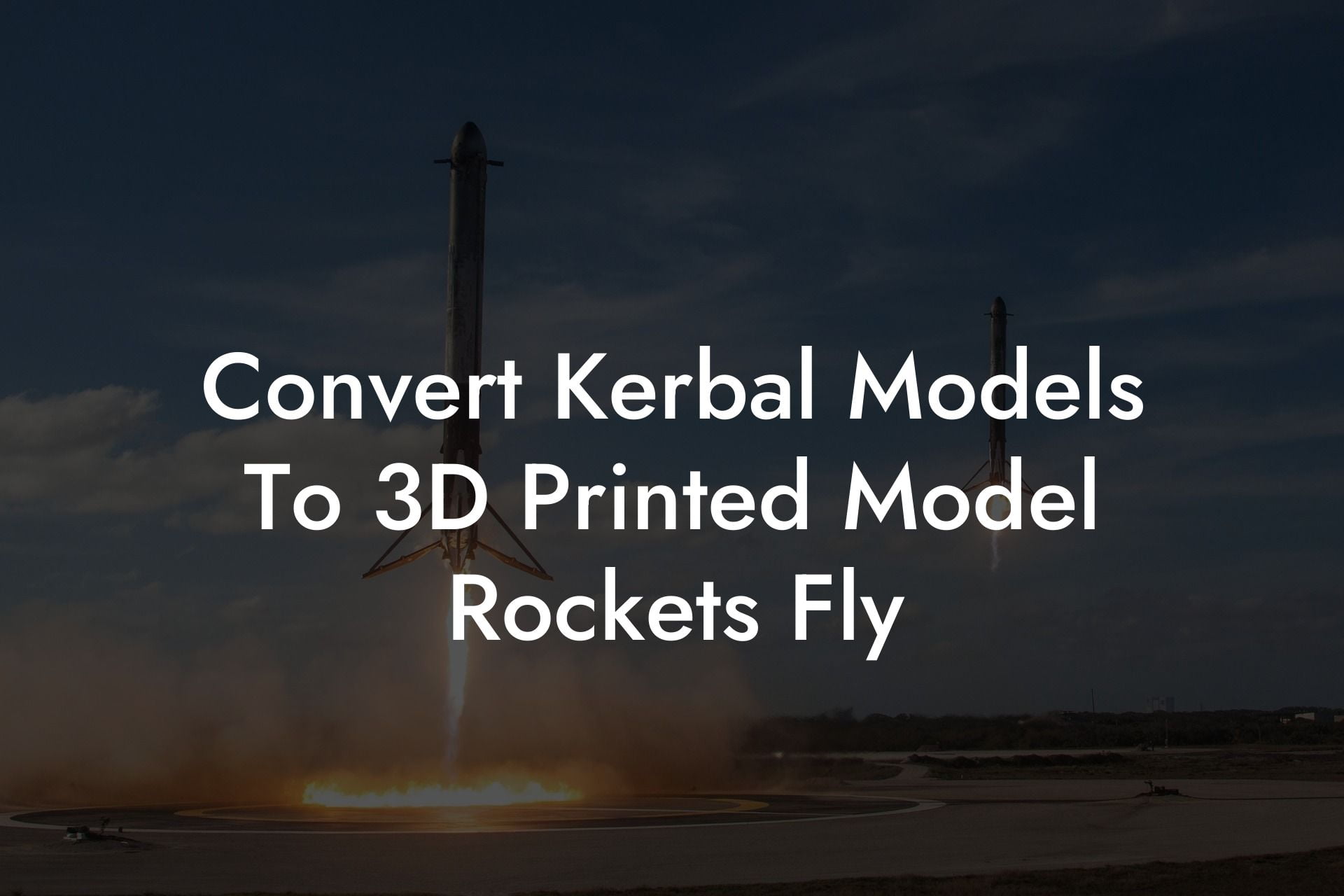Do you have a passion for model rockets and a love for the popular game Kerbal Space Program? If so, you're in luck! In this article, we will explore the fascinating process of converting Kerbal models into 3D printed model rockets that actually fly. Get ready to fuel your imagination and combine your two favorite hobbies, as the Austin Rockets team guides you through this innovative and thrilling experience.
Convert Kerbal Models To 3D Printed Model Rockets Fly Table of Contents
Understanding Kerbal Space Program (KSP) and Model Rocketry
Step-by-Step Guide to Convert Kerbal Models to 3D Printed Model Rockets
Understanding Kerbal Space Program (KSP) and Model Rocketry
Before diving into the conversion process, let's briefly expand on the basics of Kerbal Space Program and model rocketry.
Kerbal Space Program
Kerbal Space Program is a popular space flight simulation game that allows players to create, test, and launch their spacecraft designs in a realistic and physics-based virtual environment. Players can design their rockets based on real-world physics and materials to achieve optimal performance. The game has an enthusiastic fanbase, many of whom are dedicated to model rocketry.
Model Rocketry
Model rocketry is a hobby that involves designing, building, and launching miniature rockets, typically powered by lightweight, commercially available rocket motors. Enthusiasts meticulously craft their rockets with careful attention to aerodynamics and performance. Combining Kerbal Space Program designs with actual model rocketry creates a unique and engaging experience.
Step-by-Step Guide to Convert Kerbal Models to 3D Printed Model Rockets
Step 1: Exporting the Kerbal Model
The first step in the conversion process is exporting your Kerbal rocket design. You’ll need to install a mod called "Kerbal2STL," which allows you to export your design as an STL file that can be used for 3D printing.
- Install the Kerbal2STL mod on your KSP game.
- Launch the game and load your rocket design.
- Use the mod to export your design as an STL file.
Step 2: Preparing the Model for 3D Printing
Next, you’ll need to prepare the STL file to ensure it is structurally sound and compatible with your 3D printer. Using a 3D modeling software, such as TinkerCAD or Blender, you can make necessary adjustments to the model and generate a print-ready file.
- Open the exported STL file in your preferred 3D modeling software.
- Inspect the model for any errors or inconsistencies, and fix them as needed.
- Scale the model to the desired size, ensuring that it meets your printer’s specifications.
- Customize rocket components to accommodate model rocket launch systems, such as adding motor mounts and launch lugs.
- Export the final 3D model file according to your printer's requirements.
Step 3: 3D Printing the Rocket
With your 3D model file finalized, it's time to print your rocket. Load the model into your 3D printer's software, ensure proper print settings are selected, and begin the printing process.
- Ensure the printer is properly calibrated and loaded with suitable material for rocket construction.
- Review your printer’s user manual to ensure optimal printing settings for the model.
- Monitor the printing process to catch any potential issues early on.
Step 4: Assembly and Launch Preparation
Once all the rocket components have been printed, carefully assemble your 3D printed rocket according to your design. You will also need to add essential model rocket elements like the recovery system and igniter. Finally, prepare for launch in a safe and appropriate location.
- Assemble and glue the rocket components.
- Integrate the launch system components and install the recovery system.
- Test the rocket for balance and structural integrity prior to launch.
- Follow proper launch protocol and safety procedures during the actual launch.
Convert Kerbal Models To 3D Printed Model Rockets Fly Example:
To give you a clear understanding of the conversion process, we've put together a step-by-step example guide at Austin Rockets featuring a Kerbal rocket design, the 3D modeling adjustments, and the final 3D printed rocket ready to fly.
We hope this guide has inspired and equipped you to embark on your journey to convert Kerbal models into functioning 3D printed model rockets. As you tackle this exciting project, remember that experimentation, persistence, and discipline are key to success. Feel free to share this article with fellow KSP fans and model rocket enthusiasts, and don't hesitate to explore other comprehensive guides at Austin Rockets to advance your model rocketry skills. Happy launching!













